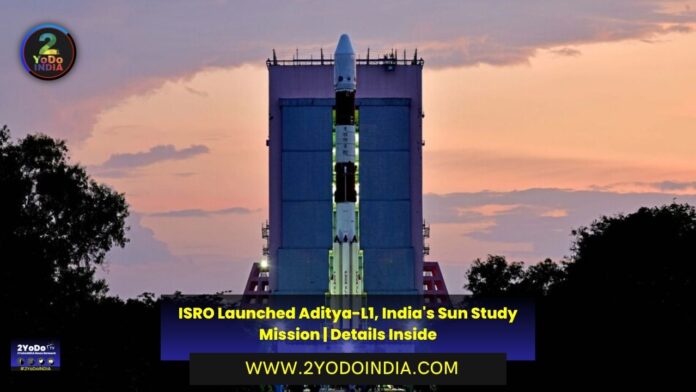After the success of India’s moon landing, ISRO launch a rocket to study the sun in its first solar mission, Aditya-L1. The rocket left a trail of smoke and fire as scientists clap.
As thousands gather at a viewing gallery near the launch site to see the lift-off of the probe, which will aim to study solar winds, which can cause disturbance on earth commonly seen as auroras.
The Aditya-L1 launch follows India beating Russia late last month to become the first country to land on the south pole of the moon.
While Russia had a more powerful rocket, India’s Chandrayaan-3 out-endure the Luna-25 to execute a textbook landing.
The Aditya-L1 spacecraft is design to travel about 1.5 million km over four months to a kind of parking lot in space where objects tend to stay put because of balancing gravitational forces, reducing fuel consumption for the spacecraft.
Those positions are call as Lagrange Points, name after Italian-French mathematician Joseph-Louis Lagrange.
The mission has the capacity to make a “big bang in terms of science,” said Somak Raychaudhury, who was involve in the development of some components of the observatory, adding that energy particles emit by the sun can hit satellites that control communications on earth.
Somak Raychaudhury said :
“There have been episodes when major communications have gone down because a satellite has been hit by a big corona emission. Satellites in low earth orbit are the main focus of global private players, which makes the Aditya L1 mission a very important project,”.
Scientists hope to learn more about the effect of solar radiation on the thousands of satellites in orbit, a number growing with the success of ventures like the Starlink communications network of Elon Musk’s SpaceX.
Rama Rao Nidamanuri, head of the department of earth and space sciences at ISRO said :
“The low earth orbit has been heavily polluted due to private participation, so understanding how to safeguard satellites there will have special importance in today’s space environment,”.
In longer term, data from the mission could help better understand the sun’s impact on earth’s climate patterns and the origins of solar wind, the stream of particles that flow from the sun through the solar system, ISRO scientists said.
After push by Prime Minister Narendra Modi, India has privatise space launches and is looking to open the sector to foreign investment as it targets a five-fold increase in its share of the global launch market within the next decade.
As space turns into a global business, the country is also banking on the success of ISRO to showcase its prowess in the sector.





